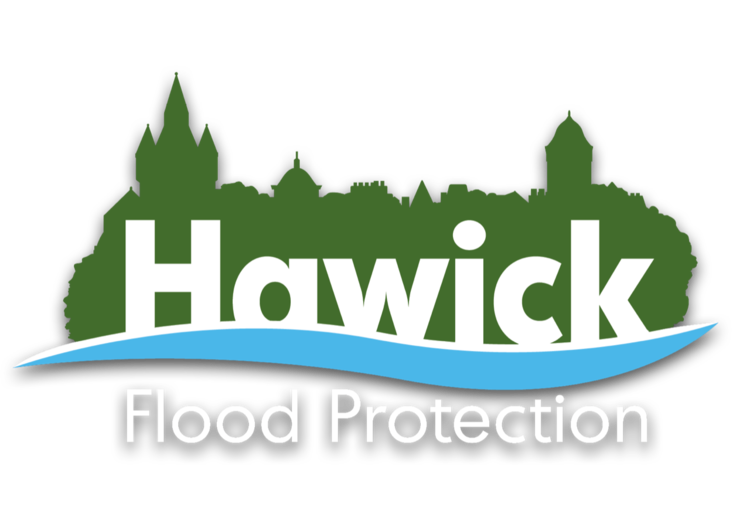River Teviot surges beneath Mansfield Bridge 2015
The Common Haugh flooded again in 2015
Section of road at Glebe Mill St collapses during 2015 flood event
History of Flooding in Hawick
Sitting at the confluence of the River Teviot and the Slitrig Water, and surrounded by rich agricultural land on all sides, Hawick was always ideally situated for the operation of riverside mills and continues to be one of the country’s foremost textile producing towns with a worldwide reputation for quality and design.
Unfortunately, its very location also means Hawick has always been a town at risk of flooding. Flooding occurs when a river is unable to handle the volume of water draining into it from its various tributaries in the surrounding area. The excessive flow causes the water to rise above the river’s banks or man-made retaining structures, thus leading to flooding.
Significant flooding events have been recorded in Hawick as far back at 1767, but most of the major and most damaging floods have occurred in the 20th and 21st Century. Starting with the most recent floods which many people will remember all too well:
In the winter of 2015/16, Hawick was hit twice with hundreds of properties in the town being damaged. Part of the road at Glebe Mill was completely washed away.
In December 2013, the Mansfield area of the town was badly flooded.
October 2005 saw Hawick hit by a 1 in 50 year event with walls washed away and Commercial Road and Mansfield park areas inundated with water.
January 2005 produced another flood in the town when the Common Haugh, Duke Street and Mansfield Park were flooded.
In October 2002, the Teviot burst its banks and inundated the famous rugby and football pitches at Mansfield Park.
Records show that there were further significant floods in 1997, 1955, 1952, 1938, and 1928. Outside of these occasions, there have been a number of lesser floods which, like the major events above, caused significant disruption and inconvenience to local people.
Experts predict that flood events are likely to become more common in the years ahead. Hence the need for action now.




